Animal |
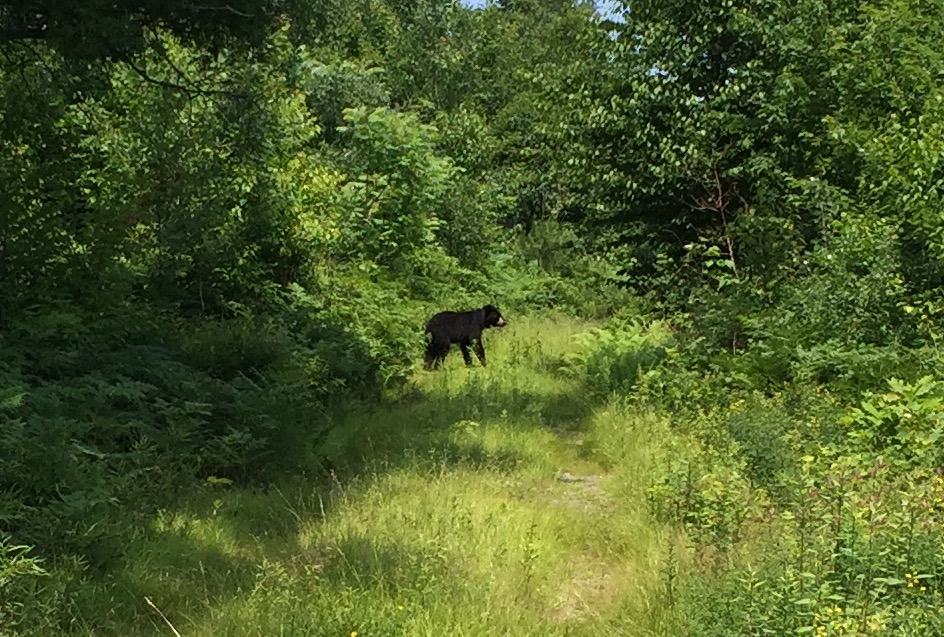
Credit: DJ McNeil |
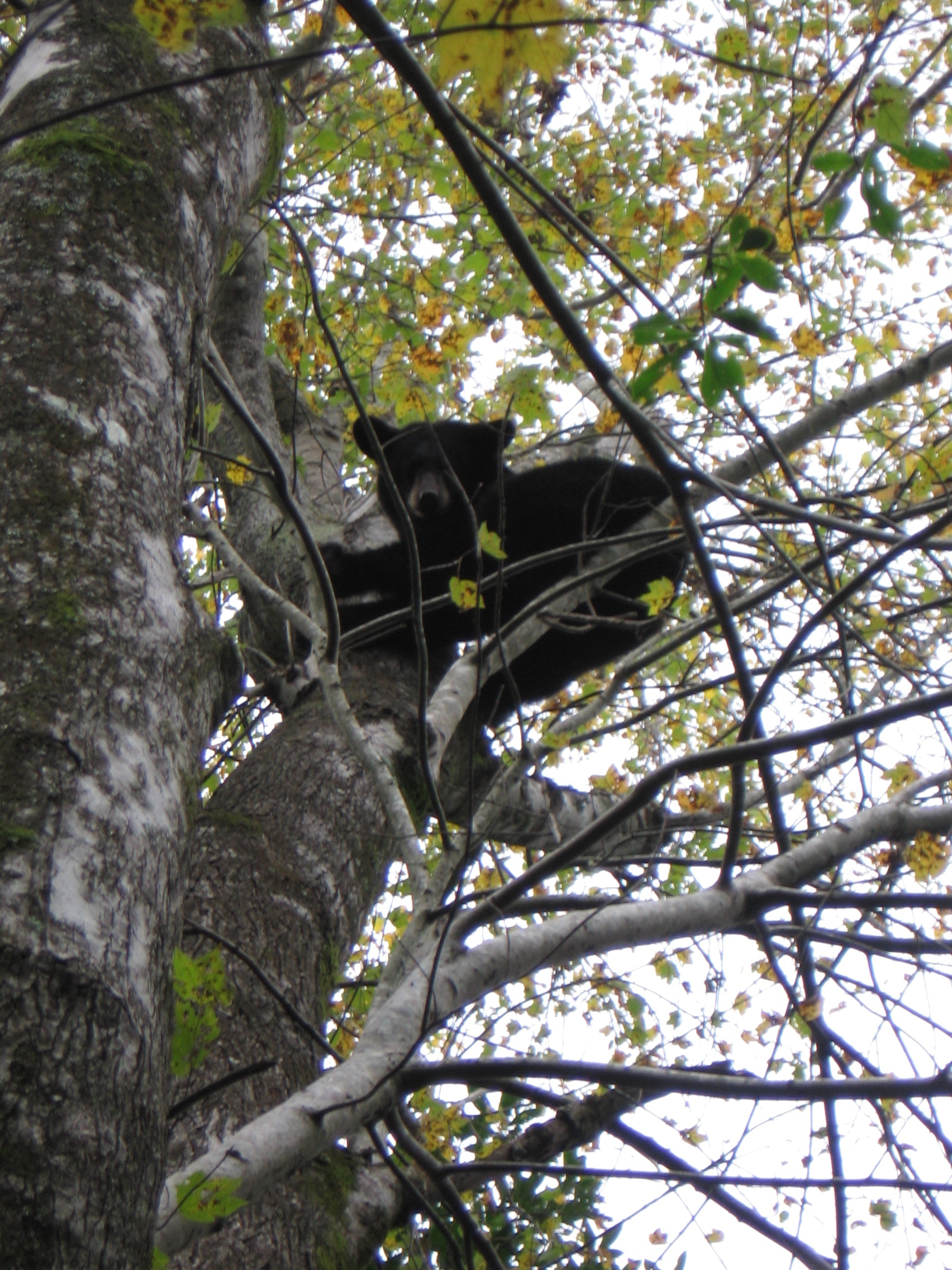
Credit: M. Colter Chitwood |
Credit: Cat Sun |
Bear: Black body with brown/tan muzzle. Brown/cinnamon phases uncommon in NY. Small round ears. Occassionaly a white patch/"blaze" on chest. Adults are 3-6' from nose to tail; short tail (3-5"). 100-500 lbs, |
|||
Other Animals:Coyotes, wolves, and dogs have longer tails and pointed ears; not easily confused. |
|||
Tracks |
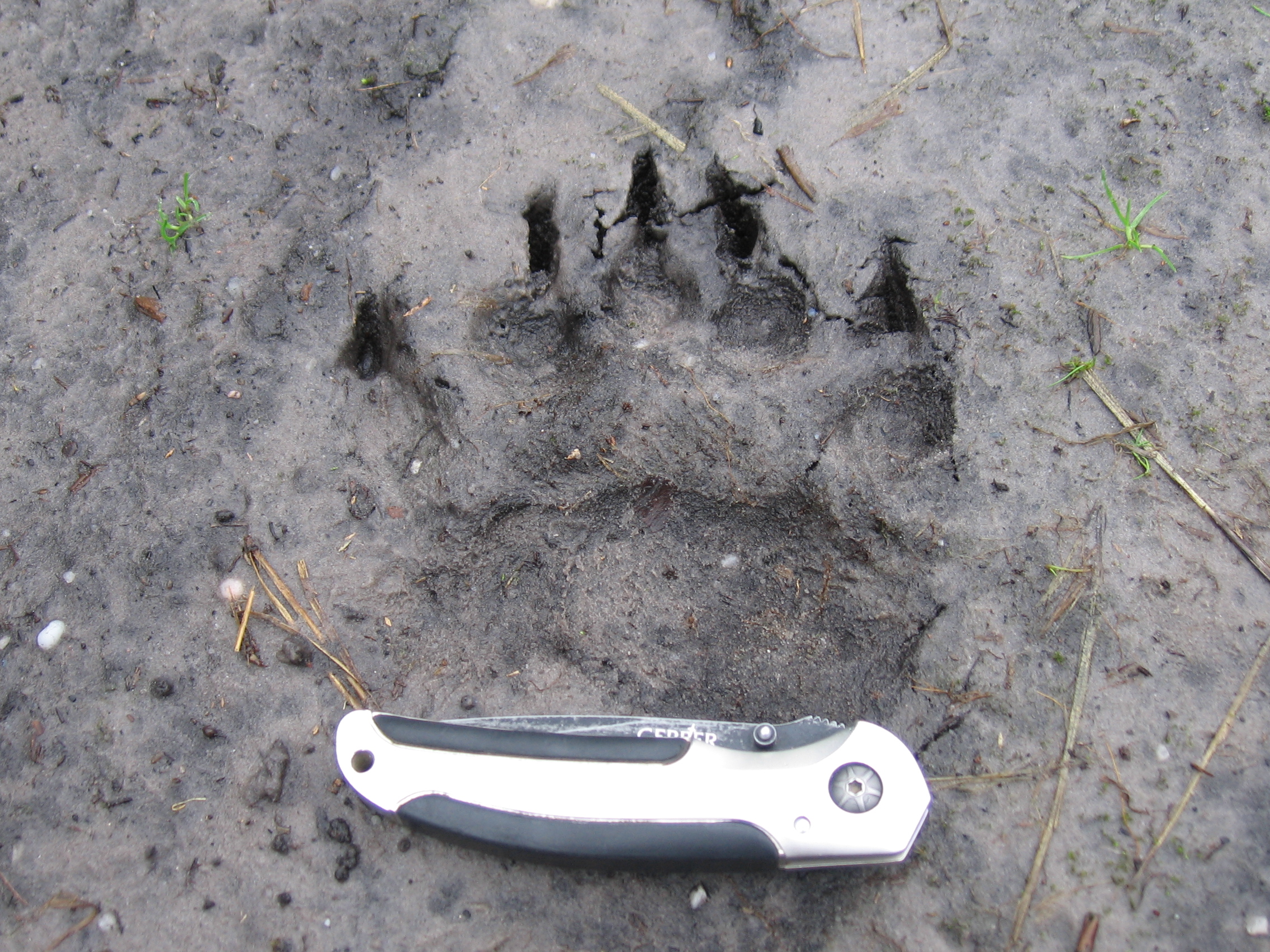 Front foot. Front foot.
Credit: M. Colter Chitwood |
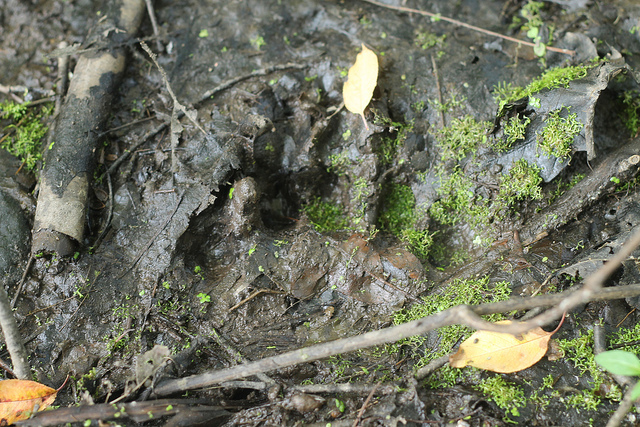 Front foot. Front foot.
Credit: Cat Sun |
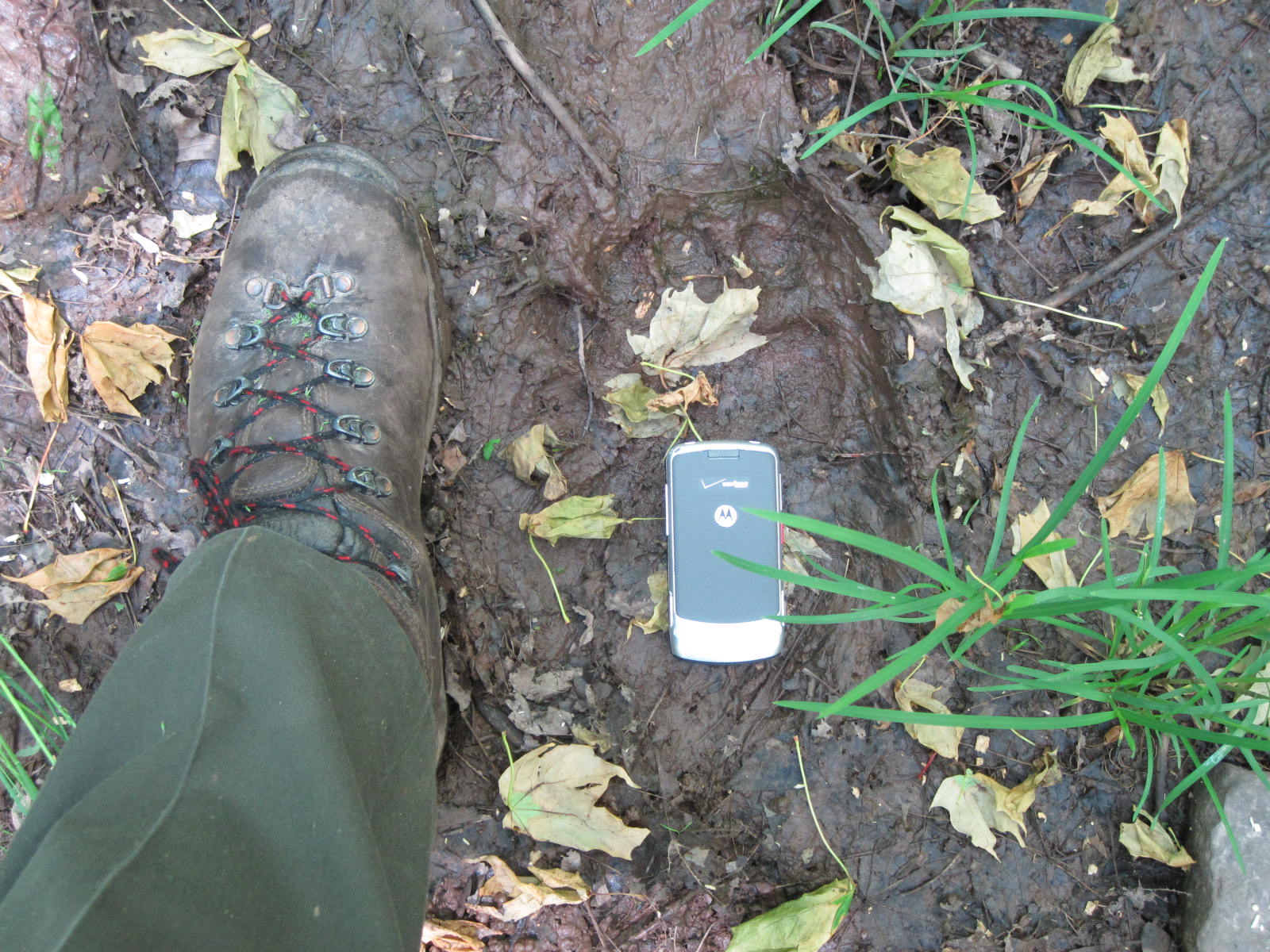 Hind foot. Hind foot.
Credit Matt Merchant |
Where: Trails, in soft soil, mud, or sand. |
|||
Bear: Broad footprints, about 4-7" long, with 5 toes and sometimes claw marks. Hind tracks are triangular. |
|||
Other Animals: Human tracks are oblong/oval. |
|||
Scat |
Credit: Renae Poole |
Credit: Matt Merchant |
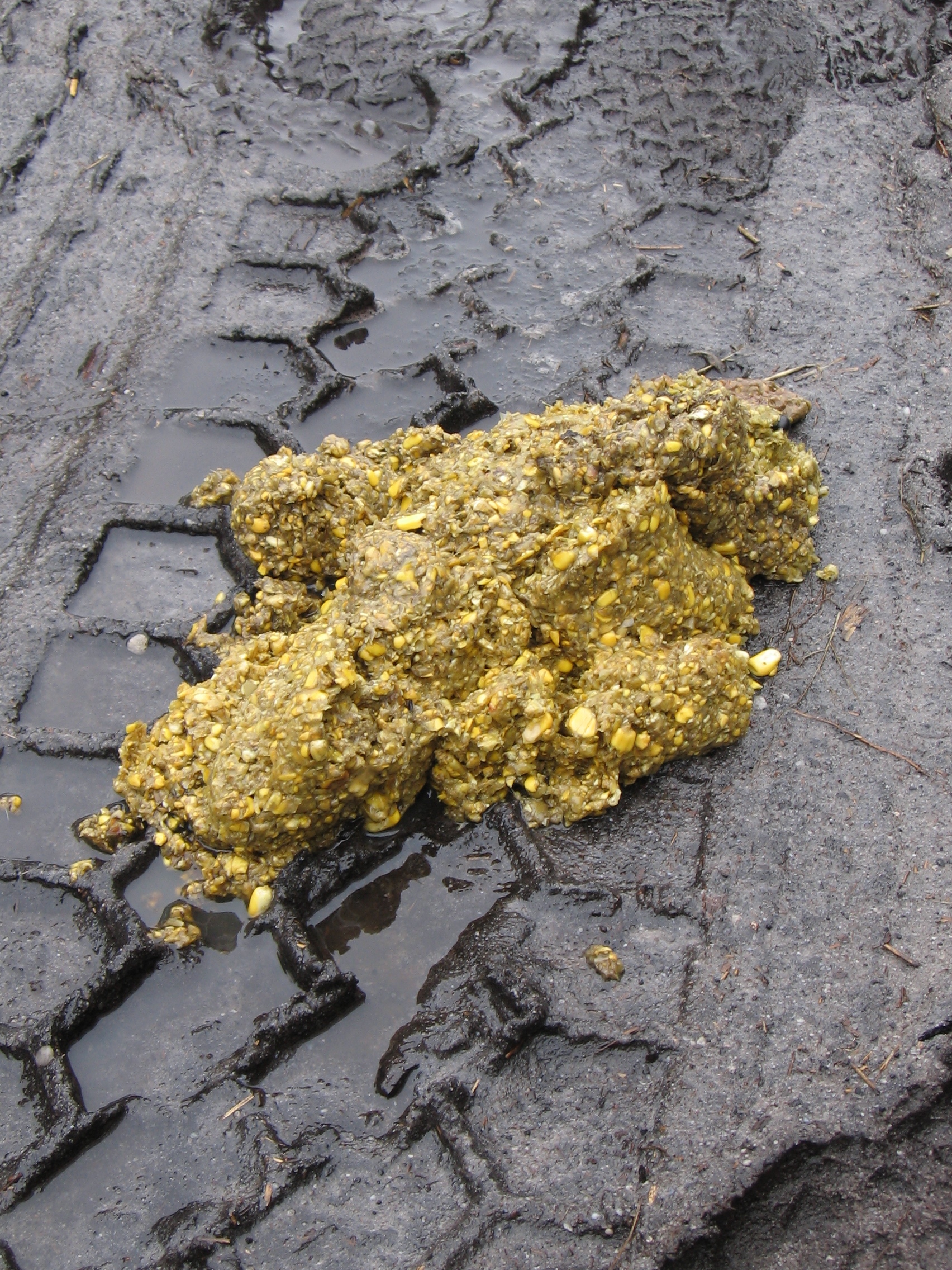
Scat from a corn diet. Credit: M. Colter Chitwood |
Where: Anywhere, but often on trails, sides of trails, at tree/plant bases. |
|||
Bear: Dark brown but varies by diet. ~1-2" diameter; usually tubular and sometimes coiled; may include grasses, seeds, animal hair, shells; if diet was mainly berries, may be soft and cowpie like, especially if old or disintegrated |
|||
Other Animals: Deer scat may be similar in overall size but is usually of clumped, smaller pellets; dog scat may be similar in shape but smaller in size. |
|||
Hair |
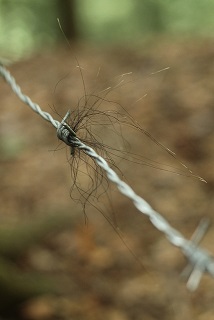
Credit: Cat Sun |
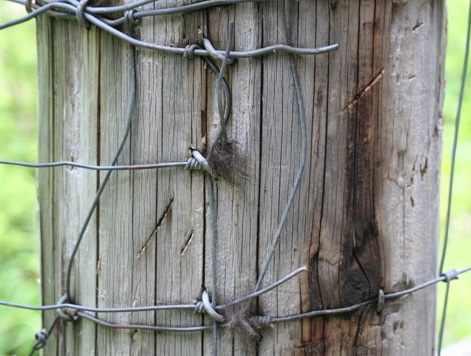
Credit: Linda Jo Hunter |
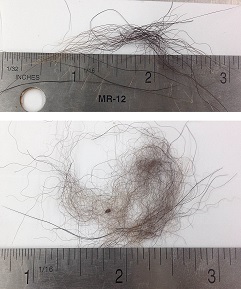
Credit: Cat Sun |
Where: On ground, tree trunks, barbed wired. |
|||
Bear: Approx. 1-4" long; guard hairs are all black; underfur may be brown. Sun exposure may lighten hair. |
|||
Other Animals: Raccoon, oppossum, and deer hair have +1 color (white, cream, tan) on a strand. Black hair from skunk is fine, usually longer than 5". |
|||